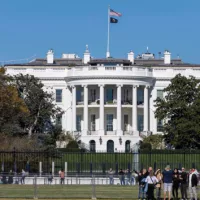
(NEW YORK) — In the days leading up to the historic total solar eclipse on April 8, skywatchers are flocking near and far to the 115 mile-wide path of totality.
However, people may not be able to see the eclipse in some locations due to the weather along the wide-ranging path.
The National Centers for Environmental Information created a U.S. Climate Normals-based interactive map to show the average heat index, temperature, dewpoint, wind chill and obscuration levels across the path of totality in the U.S.
At this point, it is too early to know if a specific town or location will be covered in clouds, but it is not too early to see how the general pattern is developing.
The latest forecast, as of Friday, shows less clouds along the path of totality.
- Mazatlan, Mexico: Mostly cloudy with some breaks in clouds; low to medium chance to see the eclipse
- Del Rio, Texas: Cloudy; low chance of seeing eclipse
- Dallas, Texas: Mostly cloudy, some breaks in clouds possible; low chance of seeing eclipse but possible
- Russellville, Arkansas: Some clouds; good chance of seeing the eclipse
- Carbondale, Illinois: A few clouds, mostly sunny; good chance of seeing the eclipse
- Indianapolis, Indiana: Few clouds, clearing sky; good chance of seeing the eclipse
- Cleveland: Lots of clouds, some breaks possible; low chance of seeing the eclipse
- Niagara Falls, New York: Some thin, high clouds; eclipse will still be visible through them
- Burlington, Vermont: Mostly clear; best spot to see eclipse
- Houlton, Maine: Clear skies; great spot to see the eclipse
Outside of the path of totality, skywatchers will have the chance to see the partial eclipse, if weather permits.
All of California, Nevada and Idaho will see mostly clear skies, according to the latest forecast.
On the East Coast, Washington, D.C., Philadelphia, New York City and Boston will be mostly clear.
Florida will have some high, thin clouds, but the eclipse will be visible.
The Upper Midwest, western Great Lakes and the Rockies, however, will have clouds, so the view of the eclipse could be obstructed.
Average cloud coverage on April 8, according to data from the National Oceanic and Atmospheric Administration:
- Dallas, Texas: 54% mostly cloudy or overcast, 46% clear to partly cloudy skies
- Little Rock, Arkansas: 51% mostly cloudy or overcast, 49% clear to partly cloudy skies
- Indianapolis: 66% mostly cloudy or overcast, 34% clear to partly cloudy skies
- Buffalo, New York: 67% mostly cloudy or overcast, 33% clear to partly cloudy skies
A total solar eclipse occurs when the moon passes between the sun and the Earth and, for a short time, completely blocks the face of the sun, according to NASA.
The track of the moon’s shadow across Earth’s surface, dubbed the path of totality, will stretch from Mexico, through the United States and into parts of Canada giving millions of eclipse chasers the chance to experience the celestial event.
In the U.S., the path of totality begins in Texas and will travel through Oklahoma, Arkansas, Missouri, Illinois, Kentucky, Indiana, Ohio, Pennsylvania, New York, Vermont, New Hampshire and Maine. Small parts of Tennessee and Michigan will also experience the total solar eclipse, according to NASA.
“You want to avoid any type of cloud, if you can,” Fred Espenak, a former astrophysicist from NASA Goddard Space Flight Center and author of “Road Atlas for the Total Solar Eclipse of 2024,” told ABC News of eclipse day.
“Let’s say it’s on a sunny day with some puffy cumulus clouds around. All you need is for one of those clouds to be in front of the sun and you’ve missed the total eclipse,” he continued, adding, “So, you’re really looking for a place with as few clouds as possible.”
“I think seeing a total eclipse is something that should be on everybody’s bucket list and this April is just a golden opportunity,” Espenak said, noting that eclipse viewing is not just for scientists and astronomers, but for everyone.
“It’s an incredible event that will be something that people will remember for their entire lives,” Espenak continued. They’ll be telling their grandchildren about the total eclipse they saw in April of 2024, if they managed to get into the path of totality and have some good weather.”
“So I wish everybody fair skies next April,” Espenak said.
ABC News will continue to update with daily forecasts leading up to eclipse day on April 8.
“Eclipse Across America” will air live Monday, April 8, beginning at 2 p.m. ET on ABC, ABC News Live, National Geographic Channel, Nat Geo WILD, Disney+ and Hulu as well as network social media platforms.
Copyright © 2024, ABC Audio. All rights reserved.















